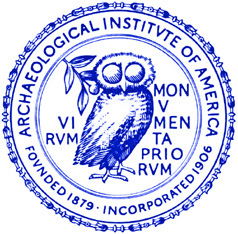The Shipwreck at Gnalić—Gagliana Grossa (1569–1583) | George F. Bass Lecture in Archaeology with Irena Radić Rossi

Sailing the route between Venice and Istanbul, the Gagliana Grossa-formerly known as the Lezza, Moceniga e Basadonna-symbolically linked two seemingly opposing, yet deeply interconnected, worlds. The ship sank in mid-autumn of 1583 near the islet of Gnalić, close to the Gnal Promontory at the southernmost tip of Pasman Island, Croatia.It was rediscovered in the early 1960s by fishers and divers from the nearby island of Murter.
Decades of systematic research have significantly revised earlier assumptions. Careful examination of archival documents preserved in the State Archives of Venice has led to many surprising and unexpected findings. The story of the shipwreckhas grown into a richly detailed narrative, filled with fascinating characters and dramatic events, resembling the plot of a gripping historical drama.
For many years, Croatian scholarly literature described the vessel as a merchant galley that sank in an upright position with its prow facing west. However, current archaeological evidence reveals a different scenario. Instead of a ship resting on its keel, the remains on the seafloor consist of the starboard side, with the keel at the northernmost edge, the stem to the west,and the prow oriented eastward.
Artifacts recovered from the site include parts of the ship's armament, rigging, and a rich assortment of cargo-some still packed in organic containers. Efforts to reconstruct the original shape of the hull, as well as to test both numerical and physical models of the ship, are ongoing as part of the NEREAS Project (Numerical Reconstruction inMaritime Archaeology), supported by the Croatian Science Foundation.
Irena Radić Rossi, University of Zadar, is an associated researcher of the Centre Camille Jullian (Aix-Marseille Universite, CNRS), adjunct professor at Texas A&M University, and affiliated scholar of the Institute of Nautical Archaeology. Her main research interests focus on maritime cultural heritage, with special emphasis on the technological development of the Adriatic shipbuilding and seafaring.
OPTIONAL: Short bibliography and/or website on lecture topic (for lay reader):
Radie Rossi, I., Nicolardi, M., Bondioli, M., Batur, K. 2021. The Shipwreck at Gnalie, A mirror to the Renaissance world. Archaeopress, Oxford.
Radie Rossi, I., Nicolardi, M.; Batur, K. 2016. The Gnalie Shipwreck: Microcosm of the Late Renaissance World. In:Davison, D., Gaffney, V., Miracle, P., Sofaer, J. (eds), Croatia at the Crossroads -A consideration of archaeological and historical connectivity. Oxford: Archaeopress Archaeology: 23-248.